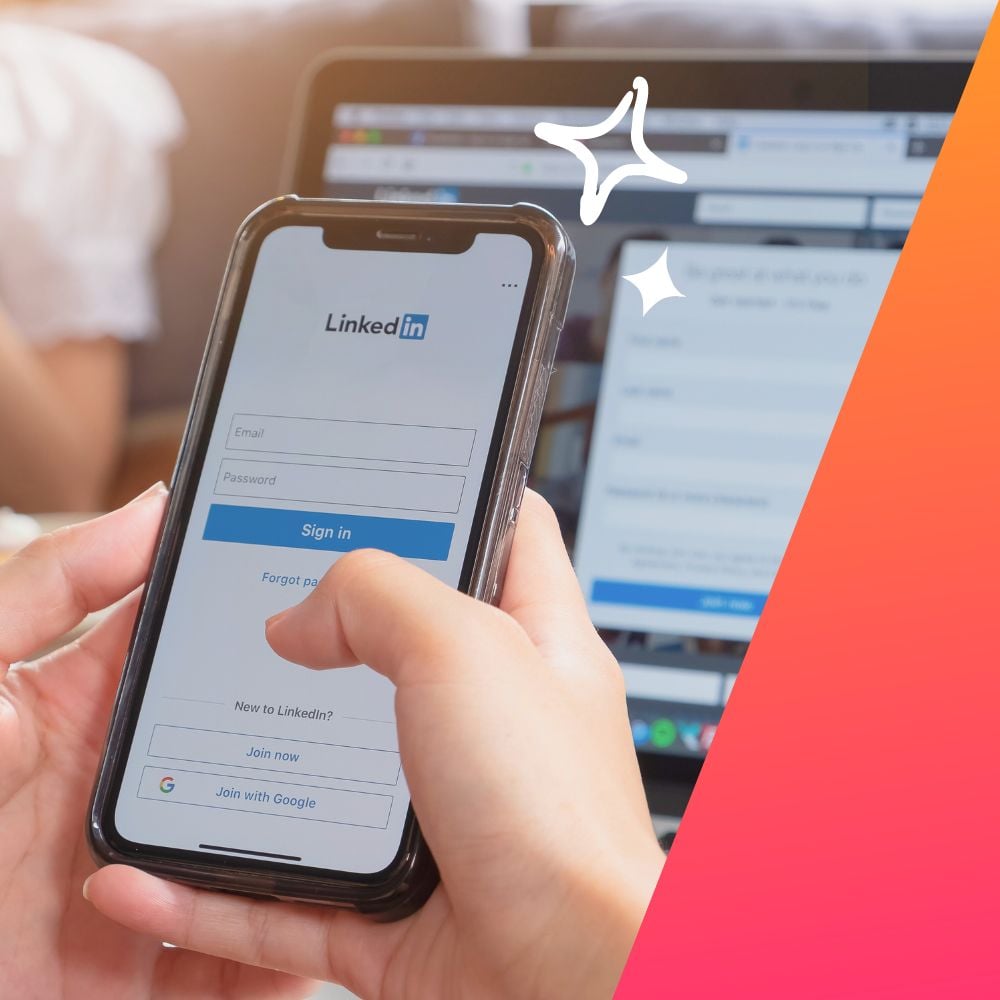LinkedIn Etiquette: The Do’s and Don’ts

It’s never too early to begin building your professional network. LinkedIn is a highly useful tool to help you do that, allowing you to make beneficial connections, stay in the loop about job opportunities, and present a polished image to the world.
Though you’re probably well-versed in social media etiquette, LinkedIn isn’t like other social networking platforms. It has its own customs and unspoken rules you’ll want to follow to avoid embarrassing faux pas and maintain a great reputation. We’ll reveal LinkedIn’s do’s and don’ts for students and young professionals.
What should LinkedIn be used for?
Unlike other social media platforms, where you’ll find content about everything under the sun, LinkedIn was founded with a specific purpose: to help professionals make connections in a career-based context. With that in mind, you should use LinkedIn for:
Researching industries you’re interested in
If you’re like most young people, you have a range of industries and jobs you’re potentially interested in pursuing. LinkedIn can help you gather data and make informed decisions during this important early stage of your professional life.
Finding job opportunities
LinkedIn is a gold mine for learning about job openings. You can search for them directly using the platform’s search bar, but you’ll also hear about them through posts from your connections and promoted content from companies that show up in your feed.
Getting noticed by recruiters
Another way you’ll hear about opportunities on LinkedIn is via recruiters seeking you out. Having a fully complete and optimized profile will help recruiters match you with jobs that may be a strong fit.
Strengthening professional relationships
Though LinkedIn isn’t the place to spread the word about your backyard barbecue or share photos from your weekend, the platform does have a social element. Use it to keep in touch with classmates, connect with new colleagues you meet at work, and forge relationships with people you’d like to get to know better.
Establishing a personal brand
Your personal brand is your reputation within the world of your career. It’s separate from your job since it can change when moving to a new company. The personal brand you build for yourself stays with you throughout the duration of your professional life. How you engage on LinkedIn contributes to your personal brand, which can be useful in advancing your career.
What SHOULDN’T LinkedIn be used for?
Some types of activity are decidedly not appropriate for LinkedIn. Here are a few of the biggest things to avoid:
Sharing personal information
While Instagram is great for sharing pics from your family vacation, and TikTok is the perfect place to document your skincare routine, personal details like this do not belong on LinkedIn (unless travel or skincare are what you do for a living!). You also want to avoid generally unprofessional content, like photos of you drinking or smoking.
Complaining about your job
Talking negatively about your job–or your boss, coworkers, past jobs, job interviews, or anything job-related–is a huge LinkedIn no-no. It conveys unprofessionalism and immaturity, which is exactly what you want to avoid when you’re working hard to get your career off the ground.
Spammy self-promotion, direct sales, or MLMs
LinkedIn is a medium for professionals to connect, not to sell to one another. Do business deals sometimes happen as a result of LinkedIn? Absolutely, but this occurs because of the relationships people build on the platform, not because of spammy sales pitches.
Dating
Save swiping right for Tinder. Do we really need to say more?
The benefits of having a professional LinkedIn profile
Being mindful of LinkedIn etiquette will facilitate productive interactions that can help you:
Get a jump on professional opportunities
One of the biggest assets of being on LinkedIn is that you’ll often hear about opportunities before they’re publicly advertised, like when a friend shares that their company is getting ready to hire and seeks out people they can refer. This puts you at an advantage over other candidates who are relying on job boards and other mass modes of hearing about jobs.
Put forth a polished image
You control how you present yourself online. By carefully curating your LinkedIn profile and choosing the right types of content to share, you’ll ensure that prospective employers view you in the most positive light.
Pass employer screenings
It’s standard practice for hiring managers to look up people they’re thinking of hiring on social media. If your LinkedIn profile is outdated or contains things that show poor judgment, it could hurt your chances of getting the job.
Stay updated with industry trends
LinkedIn is a great place to keep up with the latest happenings in your field and the workplace at large. By engaging with intention, you’ll sharpen your knowledge of current events.
Build/maintain your network
Thanks to LinkedIn, networking has never been easier. The platform allows you to chat with top thinkers in your field and connect with people halfway around the world without ever leaving your house. Following proper etiquette will keep you in the good graces of the people you’ve worked to establish strong relationships with.
LinkedIn etiquette do’s and don’ts
Do complete your profile
Fill out every section you can, even if you don’t have much experience to include. Early on in your career, it’s appropriate to list part-time jobs, internships, and relevant academic and extracurricular experience on your LinkedIn page. We talk in-depth about how to craft a great LinkedIn profile here.
Do use a professional headshot
This doesn’t mean it needs to be shot by a professional, although that’s always a great option. It just means you should use a clear photo in good lighting where any visible clothing or accessories look professional. Crop the picture between your shoulders and mid-chest to focus primarily on your face, and use a warm, smiling expression.
Do connect with people you know
On other social media platforms, you “friend” or “follow” people. On LinkedIn, you send connection requests. Build your initial network of connections with college classmates, coworkers from the jobs you’ve had so far, and mentors like professors or people you worked under during internships.
Don’t send mass connection requests
Focus on quality over quantity in your connections. While it’s okay to request connections with people you don’t know personally (more on that below), avoid sending dozens of impersonal requests that will inflate your numbers without adding any value to your network.
Do personalize your requests
It’s not a faux pas to add someone you don’t know–if you approach it the right way. You should have a legitimate reason for reaching out, like if the person is a:
- Friend of a friend that has a similar job to yours
- Professional with a job you’d one day like to have
- Thought leader who shares content that’s relevant to your field
- Recruiter in your industry
- Hiring manager at a company you want to work for
To reach out to these types of people, write a short message–300 characters is the limit–to accompany your connection request. Briefly explain who you are and why you’re reaching out to them.
Here’s an example:
Hi [person’s name]! I’m a friend of [mutual friend], who mentioned we have a lot in common. I noticed you work at [company name]. I’m also in [industry], currently working as a [job title] at [company]. I’d love to connect!
Don’t ask for unrealistic favors from new connections
When someone you’ve never met accepts your connection request, don’t turn around and immediately ask for something like a personal referral. Instead, spend some time reviewing their profile and thinking of ways you might be able to help them, like endorsing their skills or passing along opportunities they might be interested in. Networking is about mutually beneficial relationships, and you’ll build much more goodwill with your connections if you offer favors more often than you ask for them.
Do endorse people in your network
Endorsements are a way for connections to vouch for one another’s skills, sort of like a mini-reference. If a person has dozens of endorsements for web development, it’s a pretty strong indicator that their skills in this area are legit. Endorsing people you’ve worked with for skills you’ve personally seen them demonstrate is an easy way to support other professionals (and maybe gain a few endorsements of your own in return).
Don’t talk about religion or politics
Plenty of well-known people indeed advertise their religious and political views online. However, as a young professional, you don’t have the clout or reputation that more seasoned professionals have worked years to obtain. If you sound off on a divisive topic on LinkedIn, it will be one of the few reference points professional contacts will have to form an impression of you. And, if your views don’t align with theirs (or even if they do), that impression could be negative.
Thus, avoiding topics that could alienate other users, like religion and politics, is a good idea. A good rule of thumb is that if you wouldn’t bring it up with someone you just met at a dinner party, it’s probably not good fodder for LinkedIn.
Do keep it positive
Follow the old adage, “If you don’t have something nice to say, don’t say anything at all.” Keep your profile presentable by focusing on positive content, like posting a news feature about your company or commenting to congratulate a colleague on a promotion.
Do engage in a meaningful way
On other platforms, it’s totally acceptable to post a drive-thru selfie with your favorite Starbucks beverage, just for fun. On LinkedIn, though, you want to be a bit more intentional with what you publish. Before you post, ask yourself how the content will reflect on you–both the image you want to convey to prospective employers or clients and the personal brand you want to build. Aim to engage in a way that supports your goals.
Don’t forget to proofread
Before you hit ‘Post,’ take a few more seconds and proofread your writing. While a typo isn’t the end of the world, your posts will be that much more compelling if they’re free from errors.
Now that you know the ins and outs of engaging on LinkedIn make sure your profile is ready to impress anyone who comes across it. Check out these posts on How to Optimize Your LinkedIn Profile and LinkedIn Headlines to Attract Recruiters.

